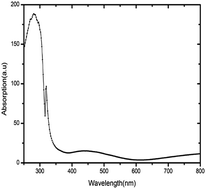Nonlinear optical response of platinum nanostructures and application for water detection in transformer oil
Abstract
We report the fabrication of platinum nanostructures on an ITO substrate (Pt-NSs) and the investigation of their nonlinear optical response (NLO). The platinum structures were synthesized using an electrochemical method. The presence of Pt-NSs was confirmed by energy X-ray diffraction analysis (EDAX) and their optical spectrum (UV-vis) displays a localized surface plasmon band centered at 290 nm. A study of their plasmonic behavior was also carried out on the basis of a simulation of Pt-NSs arrays arranged with a spacing of 30 nm, which mimicked the experimental observations. A simulation has been run using Computer Simulation Technology (CST). The absorptive and refractive contributions to the NLO were studied using the Z-scan technique with pulses of 100 fs using an 800 nm Ti-sapphire femtosecond laser. The experimental values of the NLO that were calculated were an absorption coefficient β of <2.74 cm kW−1 and a refractive index for different laser powers of +1.35 × 10−8 < n2 < +4.21 × 10−8 cm2 W−1. Owing to these extrinsic properties possessed by Pt-NSs, we further investigated the employment of Pt-NSs for the detection of water in transformer oil as a promising application in the engineering industry.


 Please wait while we load your content...
Please wait while we load your content...